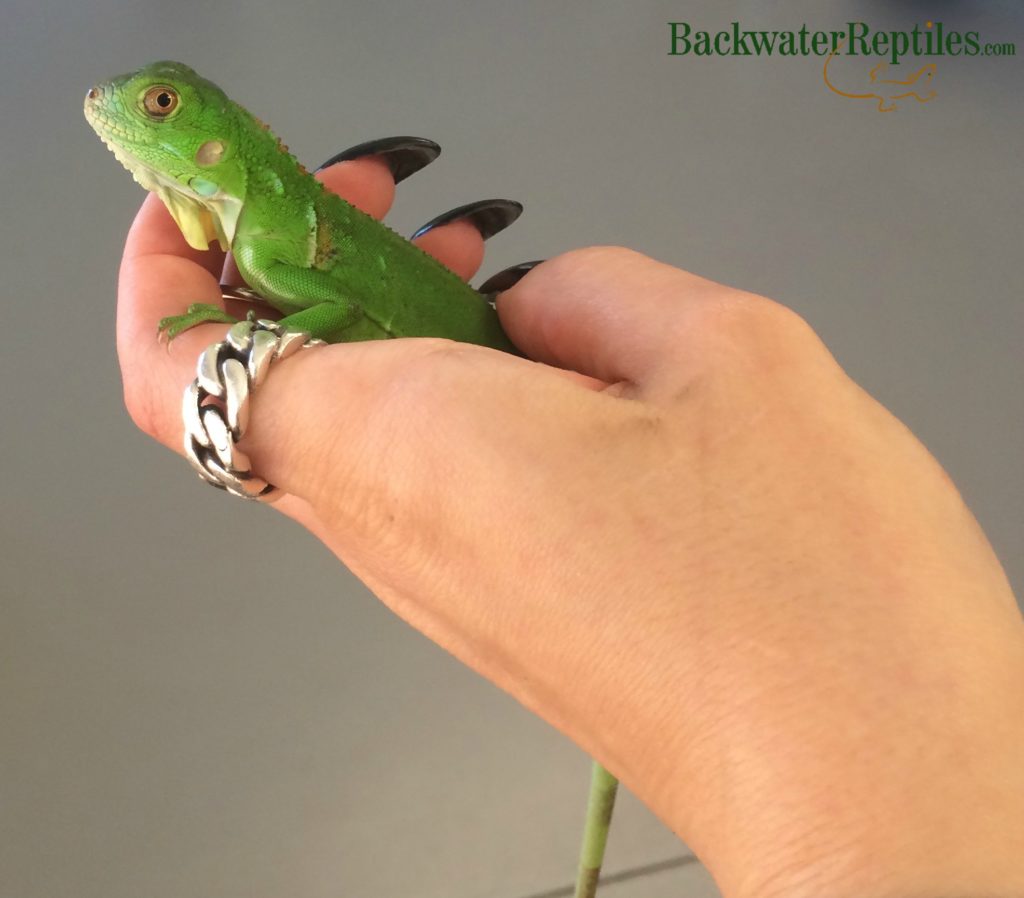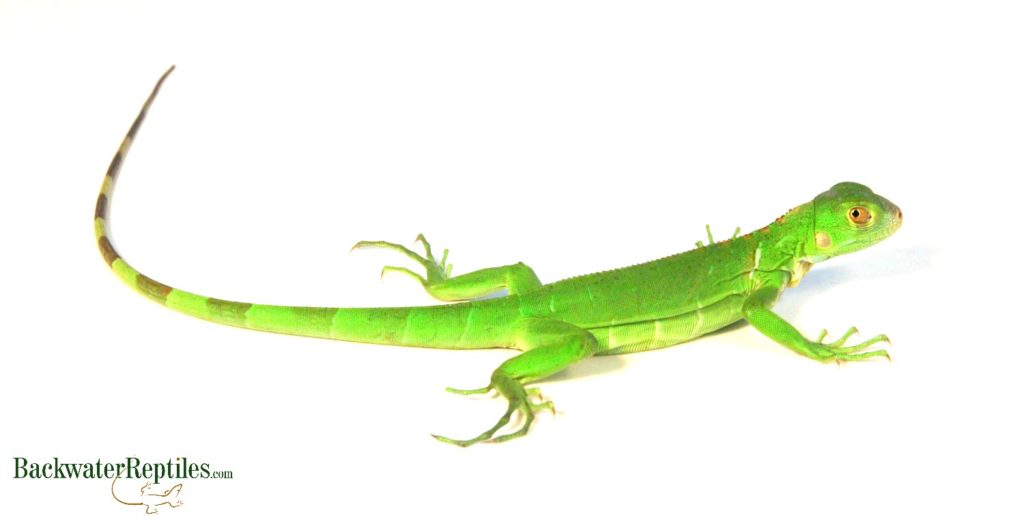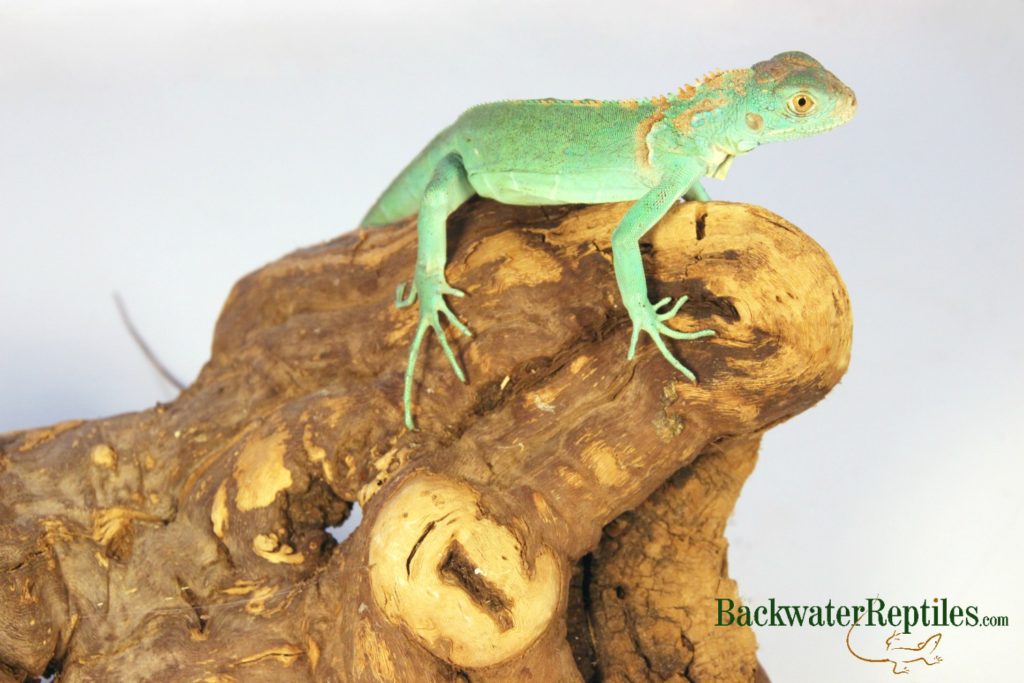If you’re considering purchasing one of these majestic beasts, you’ve no doubt asked yourself, “What do Green iguanas eat?” Despite their large size at maturity, green iguanas (Iguana iguana) continue to be one of the most popular pet lizards amongst reptile enthusiasts.
Perhaps it’s due to their prehistoric appearance – spikes down their back, dewlaps at their throat, and impressive claws – or maybe it’s because they have such prominent personalities.
If you are considering a pet iguana, one of the most valuable pieces of information you’ll need, aside from housing requirements, is what to feed your pet. In this article, we will discuss in detail what we feed our green iguanas and how you can make sure your iguanas nutritional needs are met.

What do green iguanas eat?
Green iguanas are classified as herbivores, although when it comes down to it, they are opportunistic omnivores and will consume anything they find appetizing. They have been observed in the wild as well as in captivity eating protein in the form of smaller lizards and insects.
In the wild, green iguanas will seek out vegetation such as flowers, leaves, and some fruit. If they happen to chance upon a tasty invertebrate or even small vertebrate like a rodent, they will also consume meat.
In captivity, a green iguana’s diet should consist of approximately 80 to 90% vegetable matter, ten percent or less fruit, and ten percent or less protein.
How do I prepare my iguanas food?
If you wish to forego commercially prepackaged green iguana food, we want to stress that variety is key when it comes to preparing your iguana’s meals.

You will want 45 to 50 percent of the iguana’s nutrients to come from leafy greens. We recommend kale, spinach, collard greens, turnip greens, and mustard greens. All of these veggies are high in vitamins and are extremely nutritious to both people and iguanas!
As far as preparation of leafy greens is concerned, we recommend washing the greens thoroughly and then doing a rough chop on them. You want the pieces to be bite sized so the iguana doesn’t choke. Pre-packaged, pre-cut greens are also appropriate and clearly less work than chopping your own.
Approximately 40 percent of your iguana’s diet can subsist of other veggies. We have found that squash, zucchini, green beans, snap/snow peas, carrots, and bell peppers are all appropriate fare.
The same rules apply to preparing non-leafy veggies for consumption. We’ve actually grated many of the veggies to make it quick and simple for the iguana to chow down, although dicing the veggies into bite size pieces is also perfectly acceptable.
Acceptable fruit options include: strawberries, blueberries, grapes, mangos, apples, and bananas. However, please keep in mind that with fruits, as well as with any other veggie, our list and examples is not exhaustive. These are just food items we discovered our iguanas take to quite readily.
As we’ve already mentioned, iguanas can and have been known to consume animal protein. However, we do not recommend that you feed your iguana much meat, if any at all. Perhaps as an occasional treat you could offer some dog food or insects, but we do highly advise sticking to a primarily vegetable-based diet. Too much protein will be very hard on your iguana’s liver.
What feeding schedule should I adhere to?
We feed our juvenile iguanas twice per day as they are growing and need all the vitamins and nutrients they can in order to develop strong bones and heathy scales.
Mature, adult green iguanas really only need to be fed once per day. We prepare a large plate of fresh veggies and a small amount of fruit and allow the iguana to eat until it is full. Iguanas have large appetites, but they are not gluttons and will stop eating when they’re full.

Remove any uneaten food from the iguana’s enclosure as you don’t want to encourage fruit flies or bacteria to grow inside the cage.
How much water should I provide my iguana?
Like any living creature, green iguanas need a fresh water supply. There are several ways to go about ensuring your iguana is being properly hydrated.
One method is to spray water directly onto your iguana’s meal. This is usually a good method for leafy greens as they will hold the water in their folds and crevices rather than have it remain in the food dish.
Another method that is equally simple and actually kind of a no-brainer is to maintain a fresh water dish within your iguana’s cage. You might not actually see your iguana lapping at the water, but it will drink it when its thirsty.
If you have concerns about whether or not your iguana is drinking enough water, you can actually train it to drink from the water dish. We’ve heard of people placing a treat food into the water dish so that the iguana is forced to ingest water when consuming its tasty tidbit of food.
Conclusion
Because iguanas are herbivores, they make fantastic pets for people who don’t enjoy feeding their pet other living creatures such as insects, feeder fish, or even mice.
Green iguanas are also highly trainable and friendly when you work with them, so we think that as long as you’re committed to keeping a lizard that can grow to be six feet long from nose to tail, they make excellent and rewarding pets.
If you are ready for a pet green iguana of your own, Backwater Reptiles does sell them. We hope we’ve been able to effectively explain what iguanas eat in captivity.
